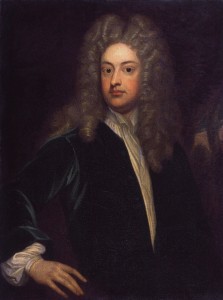 Born in 1672 in Wiltshire, Joseph Addison was a poet and writer who is most well-known for creating The Spectator, a magazine that had the primary aim of encouraging philosophical conversation. Addison started the magazine with his friend Richard Steele whom he had met first at Charterhouse School.
Born in 1672 in Wiltshire, Joseph Addison was a poet and writer who is most well-known for creating The Spectator, a magazine that had the primary aim of encouraging philosophical conversation. Addison started the magazine with his friend Richard Steele whom he had met first at Charterhouse School.
He was a talented student with a liking for the classics that took him to Oxford and Magdalen College, where he graduated in 1693. He was a reticent but popular member of the fraternity and published his first book whilst he was a student, Account of the Greatest English Poets, which earned him quite a few plaudits amongst his contemporaries. It was quickly followed by a translation of the Virgil epic Georgics.
His work attracted the attention of some wealthy benefactors including the Earl of Halifax who arranged a sizable pension for Addison that meant he could travel around Europe. For a while it kept him in comfort so that he could write but, when William III died, the finances were removed, leaving him without an income for about a year.
Addison returned to England and was given a commission to write a poem for the Battle of Blenheim for which he composed The Campaign. This so impressed those in the Halifax government that he was subsequently given the job of Commissioner of Appeals. He wrote an opera, Rosamund, in 1705 and was also promoted in his government work and for a while served as a Member of Parliament.

After a period in Ireland where he made the acquaintance of writer Jonathon Swift, Addison got together with his old college friend Richard Steele and together they helped found the literary gathering The Kitcat Club. Between 1711 and 1714, he and Steele collaborated on The Spectator which was initially produced on a daily basis and broached the philosophical and scientific issues of the day.
Addison’s most famous prose work, Cato, a Tragedy, was published in 1712 and received many plaudits from the political Whigs of the time with whom he was so closely connected. It was hugely successful in England and Ireland and even traveled to the territories in North America where, it is largely accepted, it provided some impetus for the future American Revolution.
In 1716, at the age of 44, Addison finally married the Countess of Warwick and his political career continued to head on an upward slant until his new paper, The Freeholder, garnered some criticism from his peers. He also fell out with his friend Richard Steele and started to suffer from bouts of poor health. Although he remained a Member of Parliament until his death, the decline of his health forced his resignation from the post of Secretary of State in 1718.

As his condition deteriorated, Addison reputedly called his stepson to his deathbed to see how a proper Christian should handle death. He passed away shortly afterwards and was buried at Westminster Abbey. 90 years after his passing, a town was renamed after him in New York State.

